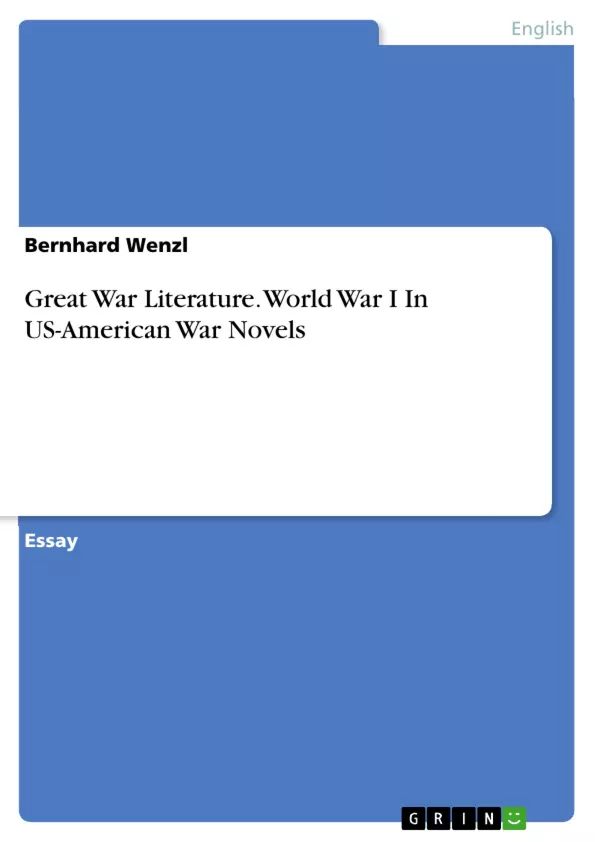World War I left significant traces in contemporary US-American novels. Many leading authors embraced the war theme and produced novels reflective of their own attitudes and experiences. Patriotism and idealism first predominated novel writing, later they gave way to pacifism and realism. The generations of writers were struggling for adequate ways to convey the horrors of modern warfare to their readers. Whereas the older authors lacked experiences at the front and fell back on well-proven means of expression, their younger colleagues had been to the front and tried new forms of representation. Given the literary and historical developments of the following years, it comes as no surprise that the novels of the traditionalists soon fell into disrepute and the anti-war novels of the former soldiers and the protest novels of the modernists found more and more appreciation.
Table of Contents
- World War I and its Impact on the USA
- Pre-War Literature and the Rise of Jingoistic Propaganda
- The War Theme in Older Authors' Works
- Willa Cather: One of Ours
- Edith Wharton: A Son at the Front
- Anti-War Novels by Veterans
- Thomas Boyd: Through the Wheat
- William March: Company K
- Protest Novels by Young Modernists
- John Dos Passos: Three Soldiers
- Edward Estlin Cummings: The Enormous Room
Objectives and Key Themes
This text aims to explore the influence of World War I on American literature, specifically focusing on how the war was portrayed in US-American war novels. It analyzes the evolution of the war theme in literature from pre-war jingoistic propaganda to the disillusioning anti-war narratives and protest novels of the 1920s.
- The impact of World War I on American culture and art
- The portrayal of war as a clash between democracy and autocracy
- The evolution of attitudes towards war, from idealism and patriotism to disillusionment and pacifism
- The use of literary techniques to convey the horrors of modern warfare
- The exploration of the psychological effects of war on soldiers and society
Chapter Summaries
The text begins by outlining the profound impact of World War I on the United States, covering political, economic, and social changes. It then examines the pre-war literary landscape, highlighting the prevalence of jingoistic propaganda that glorified war and demonized the enemy. The following chapters delve into the works of older authors, such as Willa Cather and Edith Wharton, who wrote novels that reflected the idealism and patriotism of the time. These novels often presented war as a noble endeavor, a test of courage and sacrifice.
The text then shifts focus to the anti-war novels written by veteran authors like Thomas Boyd and William March. Their works, such as "Through the Wheat" and "Company K," offer a stark contrast to the romanticized depictions of war found in earlier novels. These authors provide raw and unflinching portrayals of the brutality, suffering, and psychological trauma of war. Finally, the text explores the protest novels of young modernist authors like John Dos Passos and Edward Estlin Cummings. These writers used innovative literary techniques to critique the war machine and the social, political, and economic forces that fueled it.
Keywords
This text focuses on the themes of war and literature, exploring the impact of World War I on American novels. Key terms include: US-American war novels, jingoistic propaganda, anti-war literature, protest novels, disillusionment, modernism, realism, and the psychological effects of war.
- Quote paper
- Bernhard Wenzl (Author), 2015, Great War Literature. World War I In US-American War Novels, Munich, GRIN Verlag, https://www.grin.com/document/295671



